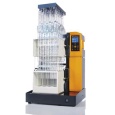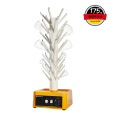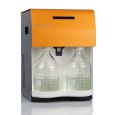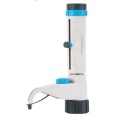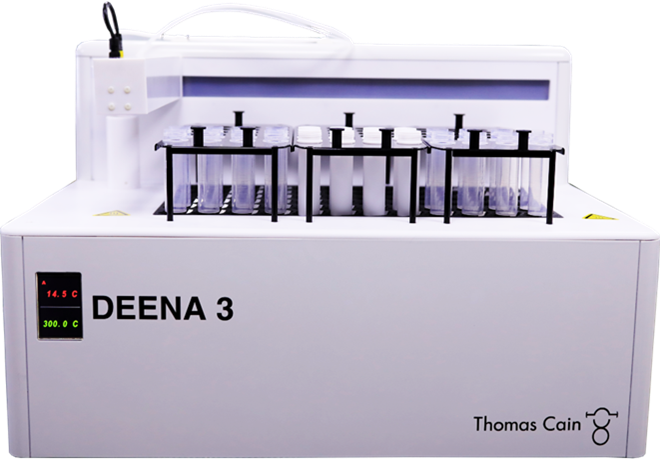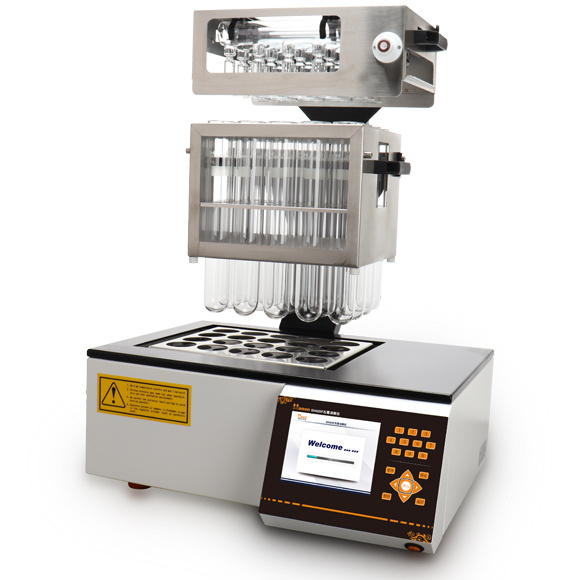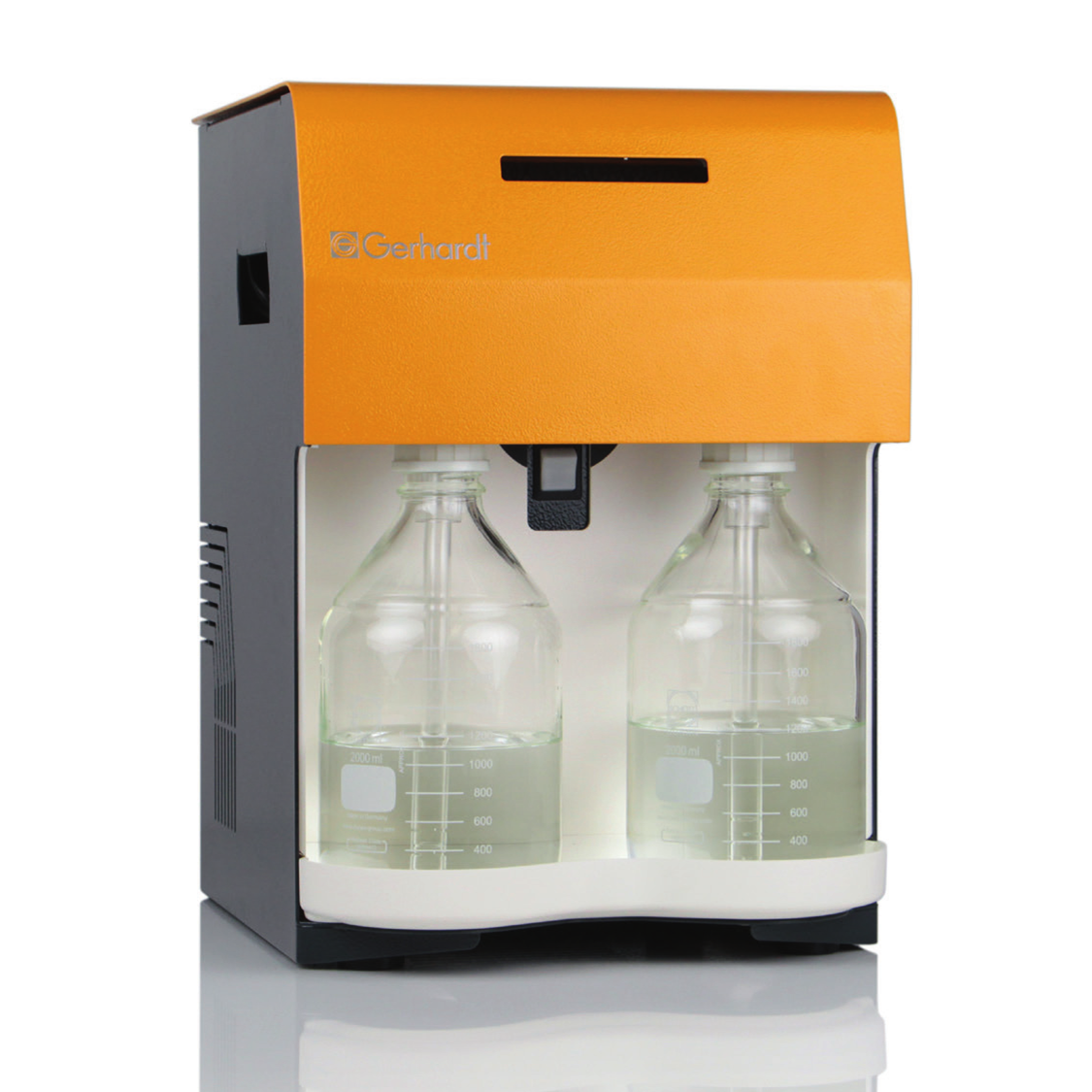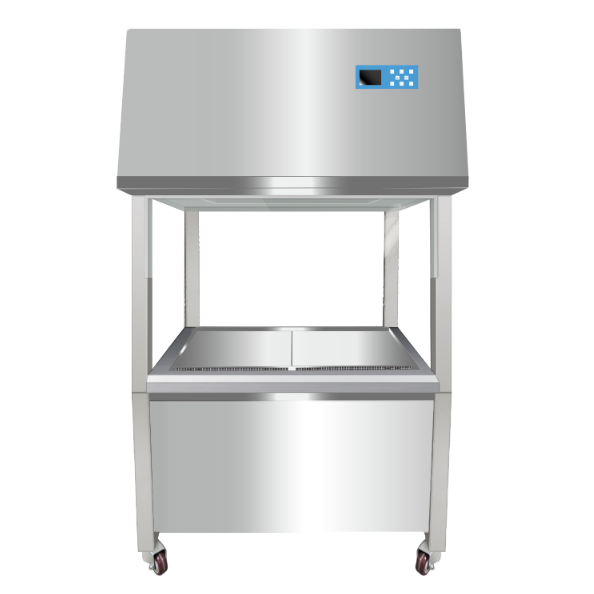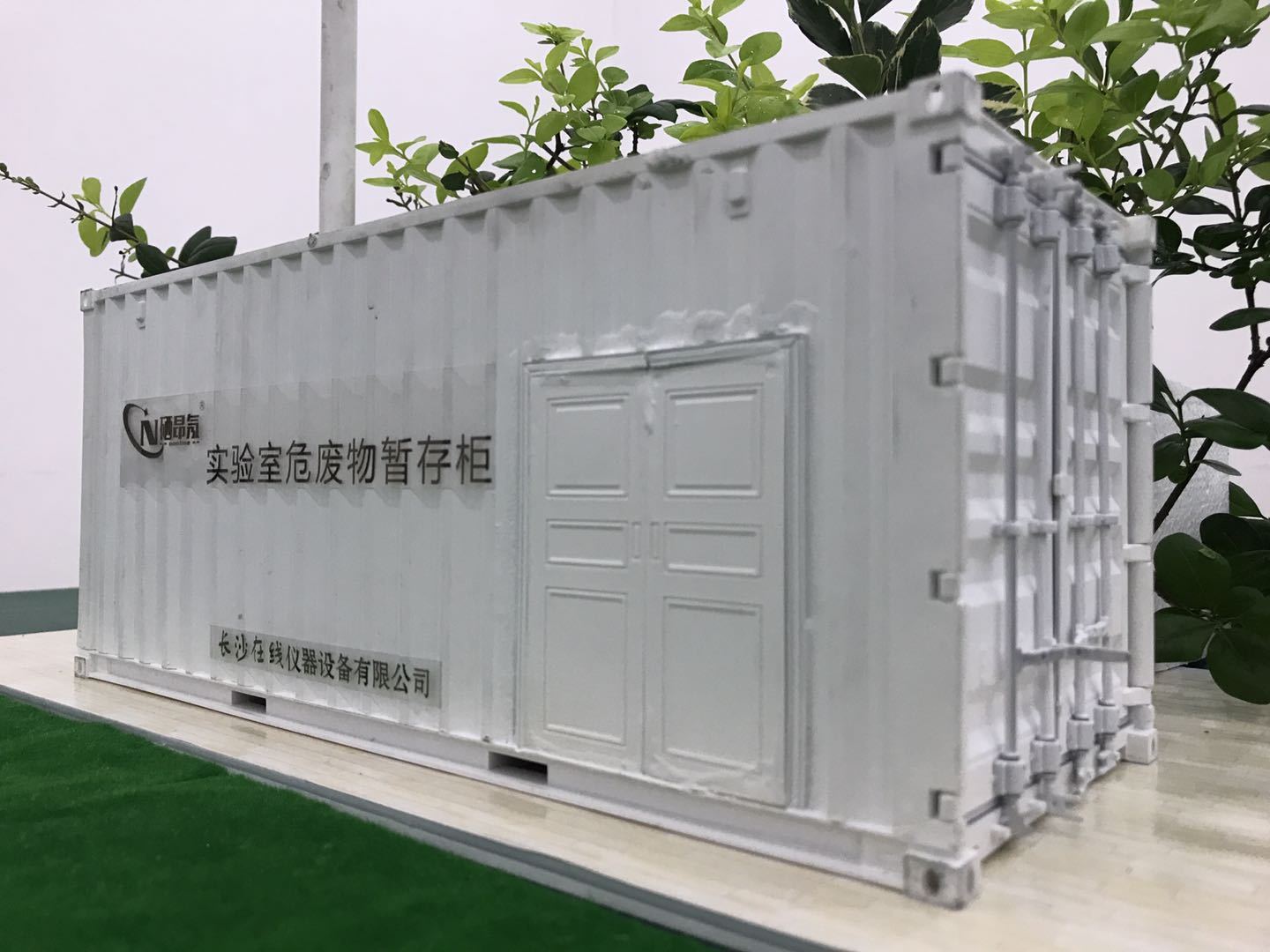方案详情
文
一种常见绿叶蔬菜 莲子草 中镉、铬和铅吸收的相关健康风险评估 Cadmium, Chromium, and Lead Uptake Associated Health Risk Assessment of Alternanthera sessilis-A Commonly Consumed Green Leafy Vegetable
植株、根、土壤提取液的重金属回收率超过95%
The percentage recovery of heavy metals in the plant, root, and soil extracts was higher than 95%.
方案详情

一种常见绿叶蔬菜 莲子草 中镉、铬和铅吸收的相关健康风险评估 Cadmium, Chromium, and Lead Uptake Associated Health Risk Assessment of Alternanthera sessilis-A Commonly Consumed Green Leafy VegetableHindawi Journal of Toxicology Volume 2021, Article ID 9936254, 7 pages https://doi.org/10.1155/2021/9936254 2Journal of Toxicology 一种常见绿叶蔬菜莲子草中镉、铬和铅吸收的相关健康风险评估 Research Article Cadmium, Chromium, and Lead Uptake AssociatedHealth Risk Assessment of Alternanthera sessilis : A Commonly Consumed Green Leafy Vegetable 斯里兰卡克拉尼亚大学理学院动物和环境管理系 W.M.DimuthuNilminiWijeyaratne iD and E. A. Charuni Sewwandi Kumari Department of Zoology and EnvironmentalManagement, Faculty of Science, University of Kelaniya, Kelaniya, Sri Lanka Correspondence should be addressed toW.M. Dimuthu NilminiWijeyaratne; dimuthu.wijeyaratne@kln.ac.lk Received 12 March 2021; Revised 29 April 2021; Accepted 10 May 2021; Published 18 May 2021 Academic Editor: ValerioMatozzo Copyright © 2021W.M. Dimuthu NilminiWijeyaratne and E. A. Charuni Sewwandi Kumari.Tish is an open access article distributed under the Creative Commons Attribution License, which permits unrestricted use, distribution, and reproduction in any medium, provided the original work is properly cited. Green leafy vegetables are becoming increasingly popular in the developing countries due to their high nutritious value, common availability, and low cost. However, no studies have assessed the health risks associated with consumption of fresh green leafy vegetables.Teh present study assessed Cd, Cr, and Pb associated health risks in a commonly consumed green leafy vegetable in developingcountries,Alternantherasessilis .TehCd,Cr,andPbconcentrationsinroots,leaves,androotzonesoilof Alternanthera sessilis harvested from organic and non-organic cultivations were measured.Te hresults indicated that Cd, Cr, and Pb con-centrations in roots and leaves of Alternanthera sessilis exceeded theWHO/FAO safe limits for human consumption. Further, bioconcentration factor, soil to root, and root to leaf translocation factors indicated a potential of hyperaccumulating Cd in roots and leaves of Alternanthera sessilis . However, the target hazard quotients for Cd, Cr, and Pb were less than 1 indicating negligible health hazard associated with long time consumption of Alternanthera sessilis . 1. Introduction Alternanthera sessilis leaves are rich in protein and therefore they are eaten raw as a fresh green leafy vegetable in many countries of South Asia [1]. Leaves and roots of this plant are widely used in ayurvedic medicine to treat eye and intestinal diseases as well. In Sri Lanka, Alternanthera sessilis is be-coming an increasingly popular green leafy vegetable in everyday diet of middle-class families due to its high nu-tritious value and availability at low cost.With increasing consumer demand, Alternanthera sessilis is cultivated by both organic and non-organic cultivation practices. be oNorth Central province is the largest agricultural province in Sri Lanka and there are many organic and non-organic sites that cultivate Alternanthera sessilis in com-mercialbasis.Despitebeingthelargestagriculturalprovince, this area is considered to be the highest risk area in the country for Chronic Kidney Disease with unknown etiology (CKDue). Since the irst record of CKDue in Sri Lanka in the early 1990s, the number of patients has been rapidly in-creasing in the North Central Province and several patients have also been recorded from other areas of the country during the past decade [2]. CKDue is caused due to chronic exposure and cumulative e]ects of elevated levels of Cd, Cr, and Pb associated with agricultural activities [3]. According to theWHO report, one hypothesis for the cause of CKDue is presence of Cd, Cr, and Pb in the vegetables grown in the North Central Province in Sri Lanka. But the only “vege-table” analyzed in the WHO study was lotus root [4]. Further, the only heavy metal analyzed in relation to CKDue is Cd [4].Moreover, signilcantly higher Cd concentrations have been recorded in tobacco harvested from CKDue prevalent areas compared to that of absent areas. However, health risks associated with consumption of these high Cd containing products have not been quantihed in these studies[5,6].Further,eventhoughthegreenleafyvegetables are an essential food item in everyday meals, no research has been conducted to assess the concentration of Cd, Cr, or Pb in the green leafy vegetables harvested from CKDue prev-alent areas. Tehrefore, the present study focused on assessment of Cd, Cr and Pb concentrations in the roots and edible portions of the most commonly consumed green leafy vegetable in Sri Lanka, Alternanthera sessilis harvested from organic and non-organic cultivations in CKDu prevalent areas in the North Central Province. Te haim of the study was to assess the potential health risks associated with the consumption of organically and non-organically grown Alternanthera sessilis in terms of bioconcentration factor (BCF), soil to root translocation factor(TF (soil − root )),androottoleaftranslocationfactors(TF (root − leaf )), target hazard quotient (THQ) for each heavy metal and hazard index (HI). 2.Materials andMethodology Four Alternanthera sessilis cultivation sites (non-organic sites: (80°46′22.678 E, 8°53′48.032v N) and (80°45′58.693n E,8°52′42.93"N); Organic sites: (80°47′12.361"E,8°51′34.401"N) and (80°48′56.867"E, 8°53′20.621"N)) with an area of 100m2 each were selected as study sites from Padaviya area in the North Central Province in Sri Lanka. Te hdistance between any two sampling sites was about10.5±0.2km. Each cultivation site was divided into 2 ×2m2sub-plots. At the end of each culture cycle during dry (April2019) and rainy seasons (October 2019), twenty plants and their root zone soil samples were collected randomly from each sub-plot. oe isampled plant and soil samples were transported to the laboratory. In the laboratory, the plants were washed with double distilled water and were separated into leaves and roots.Te hroots and leaves were oven-dried at 70°C until they attained a constant weight.Teh dried leaf and root samples were ground into powder using a me-chanical grinder and then sieved through 0.425mm mesh sizesieve.Tehsievedsampleswerestoredindesiccatorsuntil they were acid-digested.Tehsoil samples were oven-dried at 105°C for 24 hours and then, ground into a ene powder using acid washed commercial mortar and pestle, and sieved through 0.425mm mesh sieve to separate the bio-exchangeable fraction of the heavy metals [7].ae tsieved soil samples were also stored in the polyethylene bags and placed in desiccators until they were subjected to acid digestion [7]. Te hpowdered sieved soil samples were acid-digested using EDTA (Ethylene Diamine Tetra acetic acid) in the Kjeldatherm digestion system. Te epowdered sieved plant samples were acid digested using Conc HNO3 acid in the Kjeldatherm digestion system. ge Cacid-digested samples wereanalyzedforCd,Cr,andPbusinganatomicabsorption spectrophotometer (Analytic jenaModel novAA 400p) on graphite furnace mode following the procedure described in APHA [8].ie tminimum detection limits were 0.02mg/L for all the analyzed metals. Sandy loam certired reference material CRM 023 (Sigma Aldrich, USA) was used as standard reference material for soil analysis and white cabbagecertiiedreferencematerialBCR485(Sigma Aldrich, USA) was used as standard reference material for plant partanalysis. Continuingcontrolveriicationwasdone after every 10 samples to check that variability was within 10%T.o determine the accuracy of the methods used in the determination of the concentration of the metals in the soil, root, and leaf extracts, the soil, root, and leaf samples were spiked with known-amounts of the elements studied (Cd, Cr, and Pb).Te hrecovery values (%) for each metal were calculated by comparing the concentration of spiked sam-ples with non-spiked samples. Electrical conductivity, pH, cation exchange capacity, and organic matter content of soil collected from each sampling plot at each sampling season were analyzed in the laboratory following the procedures described in APHA [8]. ae bheavy metal concentrations were used to calculate the bioconcentration factor (BCF), of Cd, Cr, and Pb as described by Sulaiman et al. [9]. where C plant is the concentration of metal in plant part and C soil is the concentration of metal in soil. Soil to root and root to leaf translocation factors(TF (soil −root ) andTF (root −leaf ))werecalculatedusingfollowing formulas as described by Sulaiman et al. [9]. where TF (soil −root ) is the translocation factor from roots to leaves, C leaves is the concentration of metal in leaves, and C root is the concentration of metal in root [9]. where TF (root −leaf ) is the translocation factor from soil to roots C roots is the concentration of metal in roots, and C soil is the concentration of metal in soil [9]. Te hpotential health risk for heavy metal consumption from Alternanthera sessilis was assessed by calculating the target hazard quotient (for adults and children) using the following formula as described by the United States Envi-ronmental Protection Agency [10, 11]: where EF is the exposure frequency (156 days/year con-sidering Alternanthera sessilis is included in the diet 3 days per week);ED is the exposure duration (77 years, equivalent to the average lifetime of the Sri Lankan population);F IR is the food ingestion rate (US EPA recommended average leafy vegetable consumption rates for adults and children is 2.2g/person/day, respectively) [12]; C is the metal concentration in the edible parts of vegetables (mg/kg); R FD is the oral reference dose (Pb, Cd, Cr, and Ni values were 0.0035, 0.001,1.5, and 0.02mg/kg/day, respectively [13, 14]);W AB is the average body weight (70kg for adults and 30kg for children)[15]; and TA is the average exposure time for non-carcin-ogens (ED X 365 days/year). A THQ value greater than 1 indicates that the exposure is likely to cause obvious adverse efects to human health [11]. Tehhazardindex (HI) inthe studysites was calculatedas the sum of individual THQs for each metal [15]. Data were tested for normality using Anderson Darling test and the non-normalized data were log transformed. ANOVA followed by Tukey’s pairwise comparison was used to analyze the variation of physical and chemical parameters ofrootzonesoilandtheheavymetalconcentrationsofroots, leaves and root zone soil collected from the non-organic and organic cultivation sites during rainy and dry seasons.Teh data were analyzed usingMINITAB 17 software. 3. Results andDiscussion Tehpercentage recovery of Cd, Cr, and Pb in soil samples is presented in Table 1. Ce dpercentage recovery of heavy metals in the plant, root, and soil extracts was higher than 95%S.patial variation of physicochemical parameters and heavy metal concentrations in root zone soil of Alter-nanthera sessilis is presented in Table 2. Conductivity, cation exchange capacity, Cr, and Cd concentrations showed sig-niicant spatial and temporal variations among study sites (Table 2). Signilcantly high conductivity and organic matter content were recorded during the rainy season compared to those in the dry season in both non-organic and organic study sites. Signiscantly high cation exchange capacity, Cr, and Cd concentrations were recorded from the soil in the non-organic sites compared to those in the organic sites during both seasons. Phosphate fertilizers and carbamate insecticides are considered as major sources of heavy metals that contaminate soil in the agricultural areas [16, 17]. tehrefore, application of chemical fertilizers and chemical pest management strategies may have ineuenced the in-creased cation exchange capacity, Cd, and Cr concentrations in the non-organic sites. However, the Pb, Cd, and Cr concentrations in all the study sites were below the critical levels recommended by European Union (EU) for healthy agricultural activities (300mg/kg for Pb; 180mg/kg for Cr; and 6.4mg/kg for Cd) (Table 2). Signi;cantly high organic matter content was recorded from the soil in the organic sites compared to those in the non-organic sites during both seasons (Table 2). In the organic cultivation sites, addition of compost as a soil conditioneris frequently practiced inorder to improve the soil quality and maintain a healthy moisture condition, where as in the non-organic sites composting is not practiced.wehrefore, the compost application may have in uenced the signircantly high organic matter content in the organic cultivations. Mean Cr, Cd, and Pb concentrations recorded from roots of Alternanthera sessilis sampled from non-organic and organic cultivations are presented in Table 3.ne-heavy metal concentration of the roots of Alternanthera sessilis varied as Cr >Pb >Cd.fe heavy metal concentration in the roots of Alternanthera sessilis during dry and rainy seasons was not signiicantly diferent in both organic and non-organic cultivation sites.ee nconcentration of heavy metals in the roots of Alternanthera sessilis was signifcantly high in the non-organic cultivation sites compared to those in the organic cultivation sites during both dry and rainy seasons (Table 3).teiroots are in direct contact with the metals and nutrients present in the soil and thereby consequently up-take them from the soil solution. ehheavy metal uptake by the plant roots can be auected by pH and organic matter content of soil. neb high organic matter content in the organic cultivation sites may be contributing to the re-duction of plant uptake of heavy metals as organic matter can adsorb heavy metals, which thereby reduce the avail-ability of heavy metal ions to be taken up by plant roots [18]. However, the mean Pb, Cd, and Cr concentrations in roots of Alternantherasessilis inallthestudysiteswerehigherthan thelevelsrecommendedbyEuropeanUnion(EU)safelimits for consumption (0.3mg/kg. for Pb; 2.3mg/kg for Cr; and0.2mg/kg for Cd) (Table 3). .e2mean Cr, Cd, and Pb concentrations recorded from leaves of Alternanthera sessilis sampled from non-organic and organic cultivation sites are presented in Table 4.nei heavy metal concentration of the leaves of Alternanthera sessilis varied in a similar pattern to that of the roots as Cr >Pb >Cd.re iconcentration of Cd and Cr in the leaves of Alternanthera sessilis was signiicantly high in the non-organic cultivation sites compared to the organic cultivation sites during both dry and rainy seasons. However, there was no signiicant variation in the Pb concentration in the leaves of Alternantherasessilis inbothtypesofcultivations(Table 4). Crisanessentialelementformanybiologicalactivitiesin plants and is very important in protein metabolism. How-ever,accumulationofCrinhighconcentrationscan resultin toxic responses [19, 20]. Further, Cd and Pb are non-es-sential elements which cause toxic efects even at very low concentrations [16]. Nevertheless, accumulation of Cd in trace concentrations in plants afects the nutrients uptake, obstruct the respiratory enzymes, carbohydrate metabolism, photosynthesis, alter the antioxidant metabolism, and re-duce the crop productivity [21]. In the present study, the studied metal concentrations in all leaves harvested from non-organic and organic cultivation sites exceeded the levels recommended by WHO/FAO safe limits for human con-sumption (0.3mg/kg for Pb; 2.3mg/kgfor Cr; and 0.2mg/kg for Cd), thereby causing potential health risks to the consumers. Te hbioconcentration factor of Alternanthera sessilis for Cd, Cr, and Pb in the study sites during dry and rainy seasons is given in Figure 1.deybioconcentration factor for Cd, Cr, and Pb in the non-organic sites was 1.9, 0.4, and 0.5, respectively, during the dry season and 2.0, 0.5, and 0.5, respectively, during the rainy season. Further, the bio-concentration factor for Cd, Cr, and Pb in the organic sites was 1.8, 0.4, and 0.6, respectively, during the dry season and 1.7, 0.3, and 0.6, respectively, during the rainy season(Figure 1). Bioconcentration factor (BCF) is an important indicator used in environmental toxicology and risk as-sessment to determine the degree of intake and storage of toxic substances in biota [22, 23]. In plants, the BCF is dexned as the ratio of metal concentration in plant part to the corresponding metal concentration in soil. BCF is used 镉铬铅 Table 1: Percentage recovery of Cd, Cr, and Pb in the soil, root, and leaf extracts. Percentage recovery±standard deviation (%) Cd Cr Pb Soil extract 95.6±0.1 95.8±0.1 96.1±0.3 Root extract 96.2±0.2 95.1±0.1 96.1±0.2 Leaf extract 95.4±0.2 95.1±0.2 95.7±0.2 Table 2: Spatial variation of physicochemical parameters and heavy metal concentrations in the root zone soil sampled from non-organic andorganic Alternantherasessilis cultivationsinthePadaviyaarea,SriLanka.Dataarepresentedasmean ±SD.Ineachrow,themeanvalues with direrent superscript letters are signi cantly di erent from each other (ANOVA, Tukey’s test,P <0.05, N a 80). Non-organic cultivation sites Dry season Rainy season Dry season Rainy season pH 6.63±0.08a 6.22±0.36a 6.57±0.12a 6.52±0.09a Conductivity (uS/cm) 213.7±22.1a 173.05±12.4b 147.1±19.3c 206.72±19.4a Organic matter content (%) 2.62±0.41a 2.46±1.32a 3.98±0.33b 5.36±1.2c Cation exchange capacity (meq/100g) 17.25±1.00a 20.50±1.00a 13.75±0.50b 13.00±1.00b Pb (mg/kg dry weight of soil) 5.59±0.62a 6.44±0.42a 5.17±0.52a 5.50±0.37a Cr (mg/kg dry weight of soil) 27.87±3.78a 28.65±4.28a 18.67±2.66b 18.68±3.52b Cd (mg/kg dry weight of soil) 1.00±0.09a 1.03±0.00a 0.37±0.01b 0.4±0.00b Table 3:Teh mean Cr, Cd, and Pb concentrations recorded from roots of Alternanthera sessilis sampled from non-organic and organic cultivations. Results are presented as mean ±SD. In each row, the mean values with dieerent superscript letters are signiccantly direrent from each other (ANOVA, Tukey’s test,P <0.05, N =80). Organic cultivation sites Metal Dry season Rainy season Dry season Rainy season Pb 4.72±0.55b 4.94±1.54b 1.53±0.11a 1.93±0.42a Cr 17.875±3.29b 18.86±1.96b 6.33±1.71a 6.86±1.17a Cd 1.98±0.72b 1.98±0.03b 0.48±0.01a 0.34±0.09a to identify hyper-accumulator species for heavy metals[24, 25]. If the BCF is greater than 1 for a particular metal, the plant is considered as a hyper-accumulator of that metal[22]. According to the results of the present study, Alter-nanthera sessilis can be considered as a hyper-accumulator of Cd as the BCF for Cd is greater than 1 in all the sites during both dry and rainy seasons (Figure 1). Translocation factor (TF) can also be used as an index to assess the hyper-accumulation capacity of heavy metals in plants. TF assesses the capacity to accumulate heavy metals in the roots, stems, or leaves of the plant. [26–28]. emsoil to root and root to leaf translocation factors of Alternanthera sessilis for Cd, Cr, and Pb in the study sites during dry and rainy seasons are given in Figure 2.ue dsoil to root trans-location factor of Alternanthera sessilis for Cd, Cr, and Pb in non-organic sites was 1.9, 0.6, and 0.8, respectively, during the dry season and 1.9, 0.6, and 0.8, respectively, during the rainy season. 1e .soil to root translocation factor of Alternanthera sessilis for Cd, Cr, and Pb in organic sites was 1.8, 0.4, and 0.6, respectively, during the dry season and 1.7,0.3, and 0.6, respectively, duringthe rainy season. According to the results of the present study, the soil to root TF for cadmium is greater than 1, indicating hyperaccumulation potential of Cd in the roots of Alternanthera sessilis . Further, root to leaf translocation factor of Alternanthera sessilis of Cd, Cr, and Pb in non-organic sites was 0.9, 0.6, and 0.6, respectively, during the dry season and 1.1, 0.7, and 0.7, respectively, during the rainy season. Similarly, in the or-ganic sites, TF for Cd, Cr, and Pb was 1.4, 1.0, and 2.1, respectively, during the dry season and 2.0, 0.9, and 1.8, respectively, during the rainy season (Figure 2).9e ,results of present study indicate that there is a potential of hyperaccumulating Cd in the leaves of Alternanthera sessilis . Further, in the organic sites, there is a potential to hyper-accumulate Pb and Cr in the leaves of Alternanthera sessilis . TF >1 at root to leaves may also indicate the possibility of foliar metal absorption due to atmospheric deposition of heavy metals on GLV surfaces, in addition to uptake via the root system [29]. yettarget hazard quotient values (THQ) for each heavy metal and the hazard index (HI) for adults and children are given in Table 5. Te hsequence of THQ for adults and children ranged as Pb
确定
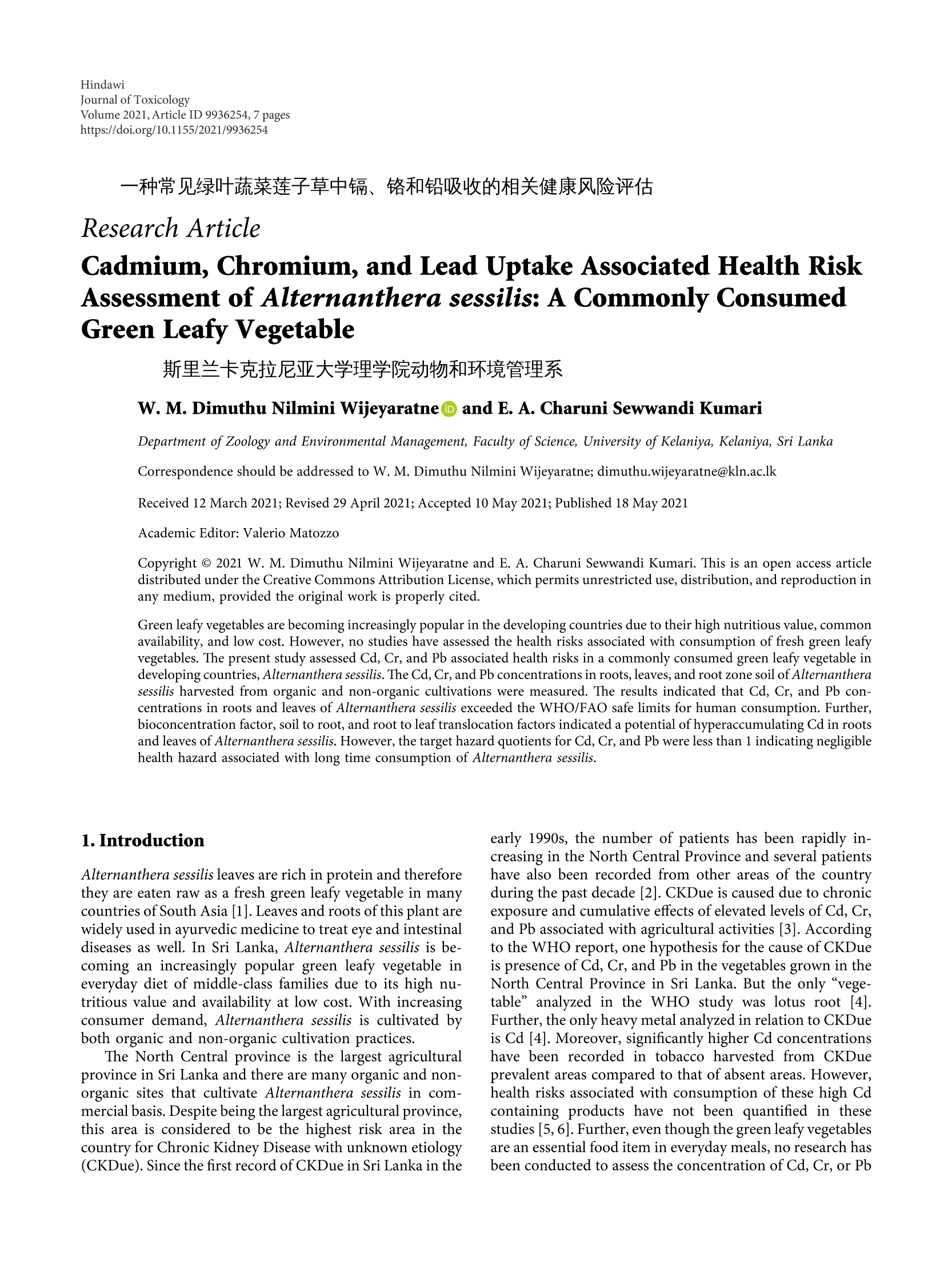
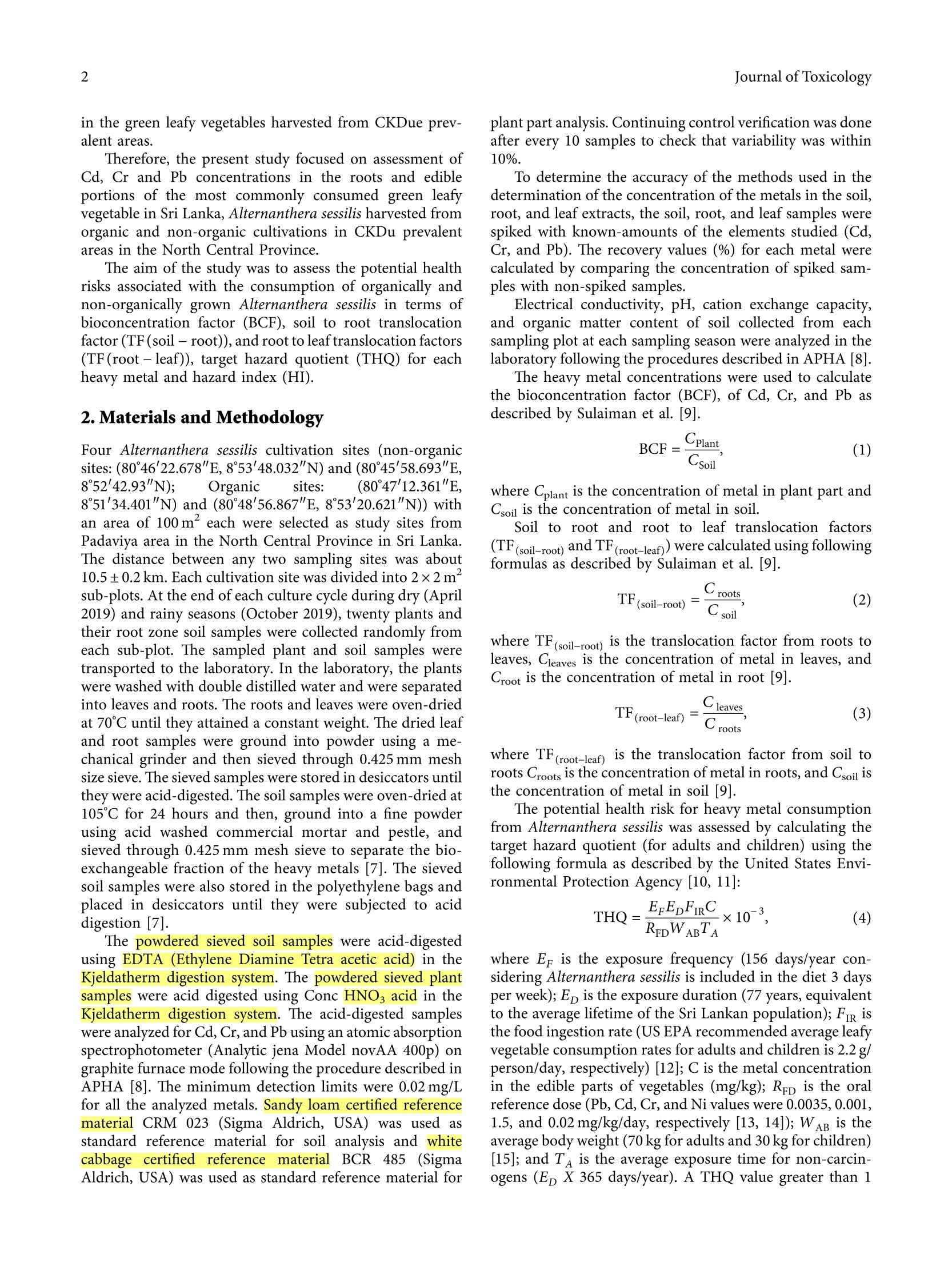
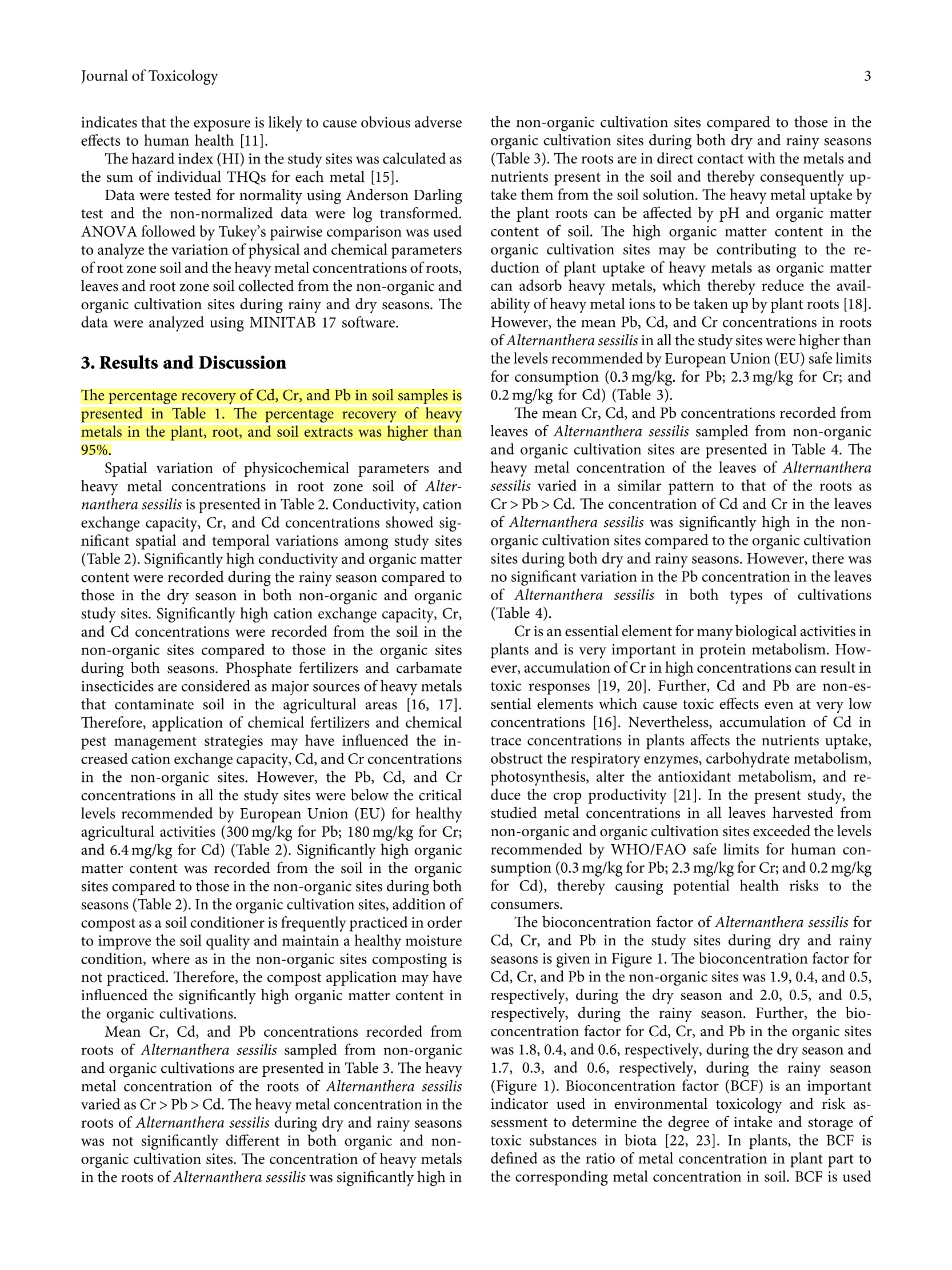
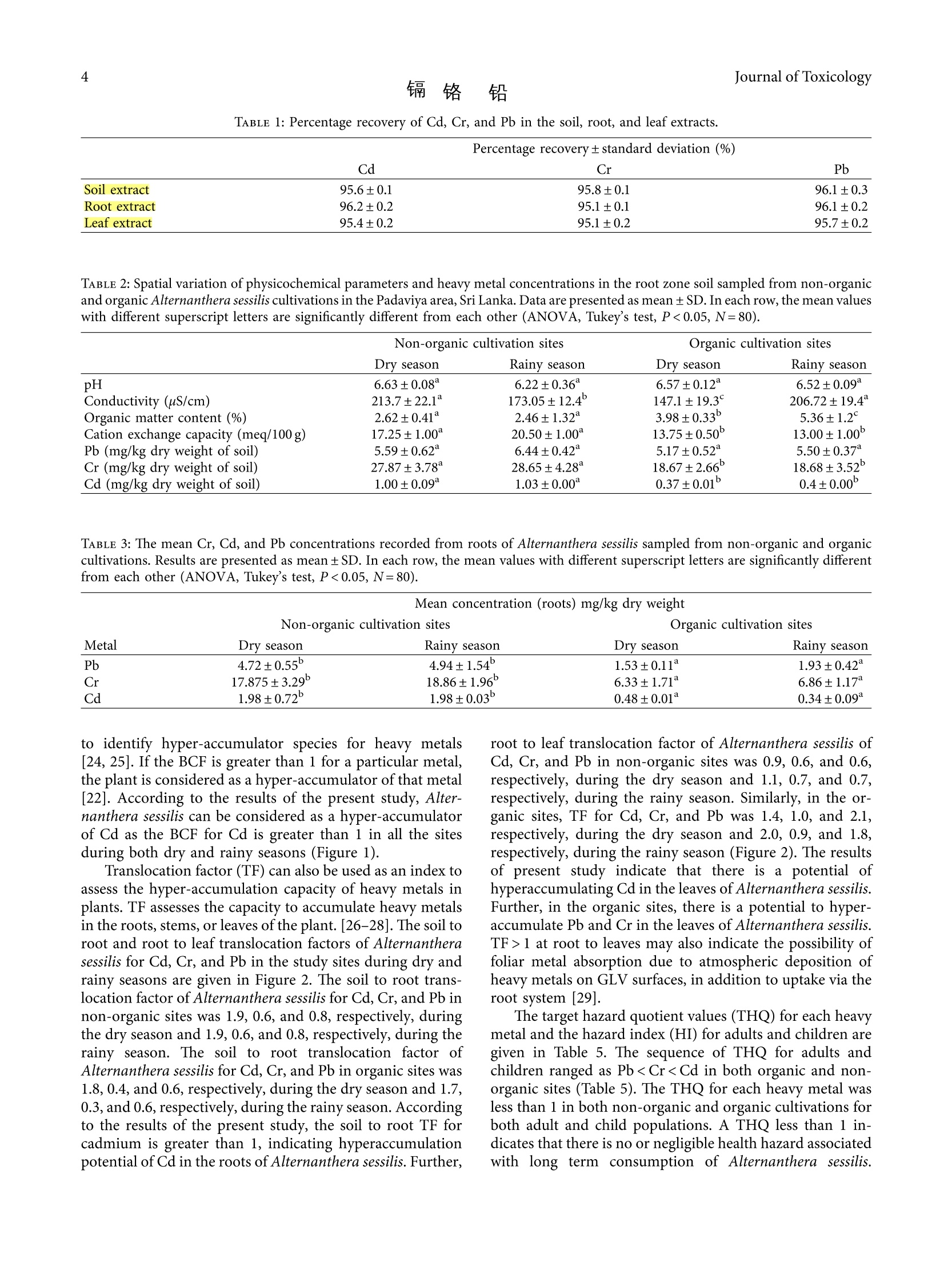
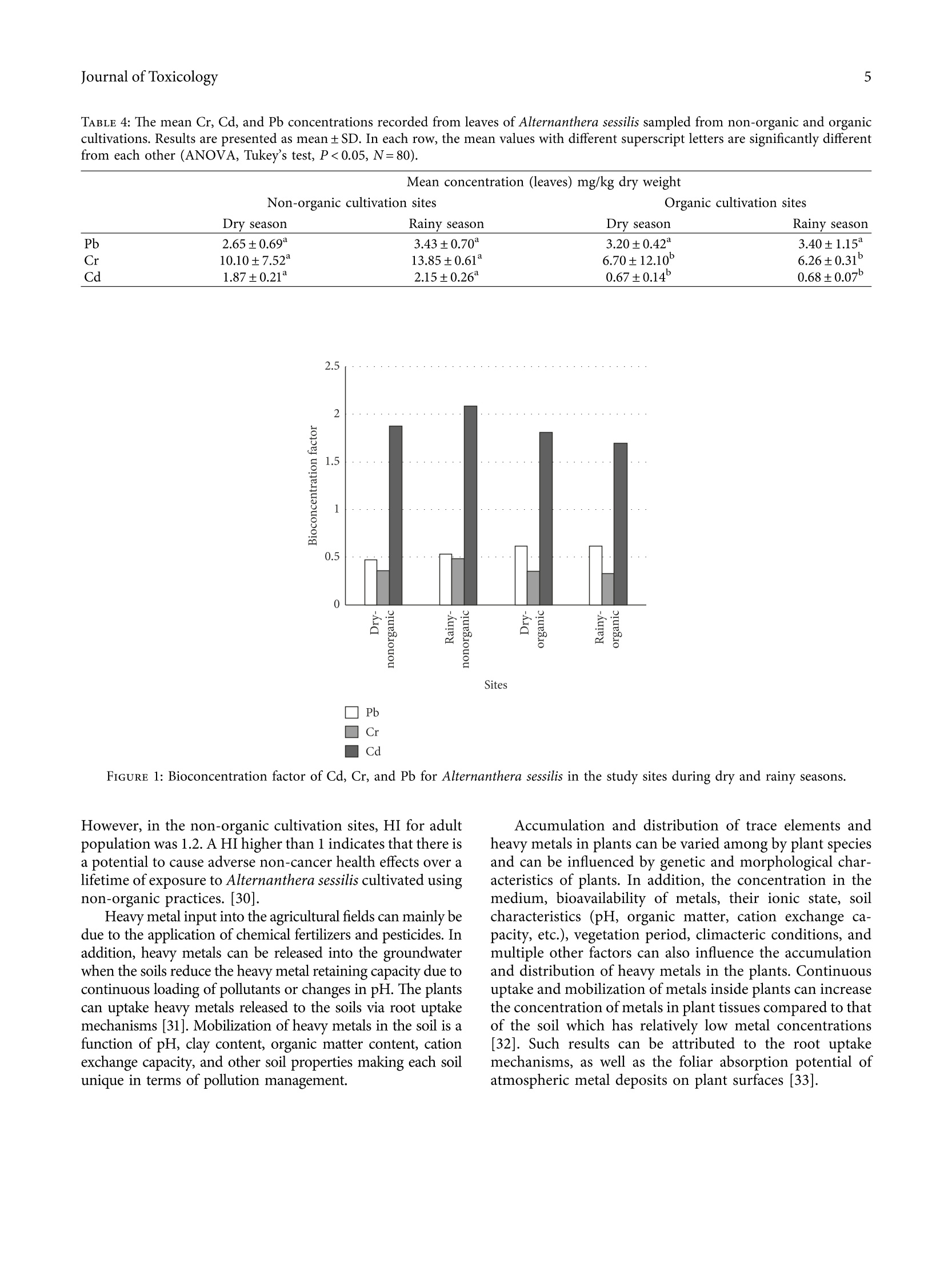


还剩5页未读,是否继续阅读?
中国格哈特为您提供《一种常见绿叶蔬菜 莲子草 中镉、铬和铅的检测》,该方案主要用于其他蔬菜制品中重金属检测,参考标准--,《一种常见绿叶蔬菜 莲子草 中镉、铬和铅的检测》用到的仪器有格哈特痕量金属消解仪SMA-L 20S、格哈特快速干燥仪STL56、格哈特自动升降40位消解仪KT-L 40s、格哈特维克松废气实验室废物处理系统涤气VS、德国移液器MM
推荐专场
相关方案
更多
该厂商其他方案
更多










